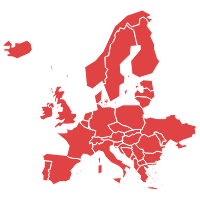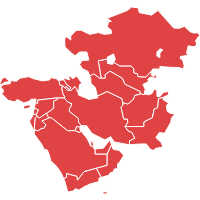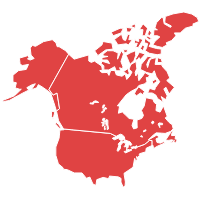| 1.Executive Summary |
| 2.Global 3D Home Printers Market Introduction |
| 2.1.Global 3D Home Printers Market - Taxonomy |
| 2.2.Global 3D Home Printers Market - Definitions |
| 2.2.1.Printer Technology |
| 2.2.2.Printing Material |
| 2.2.3.End User |
| 2.2.4.Print Volume |
| 2.2.5.Region |
| 3.Global 3D Home Printers Market Dynamics |
| 3.1. Drivers |
| 3.2. Restraints |
| 3.3. Opportunities/Unmet Needs of the Market |
| 3.4. Trends |
| 3.5. Product Landscape |
| 3.6. New Product Launches |
| 3.7. Impact of COVID 19 on Market |
| 4.Global 3D Home Printers Market Analysis, 2020 - 2024 and Forecast 2025 - 2031 |
| 4.1. Market Analysis, 2020 - 2024 and Forecast, 2025 - 2031, (Sales Value USD Million) |
| 4.2. Year-Over-Year (Y-o-Y) Growth Analysis (%) |
| 4.3. Market Opportunity Analysis |
| 5.Global 3D Home Printers Market By Printer Technology, 2020 - 2024 and Forecast 2025 - 2031 (Sales Value USD Million) |
| 5.1. Fused Deposition Modeling (FDM) |
| 5.1.1. Market Analysis, 2020 - 2024 and Forecast, 2025 - 2031, (Sales Value USD Million) |
| 5.1.2. Year-Over-Year (Y-o-Y) Growth Analysis (%) and Market Share Analysis (%) |
| 5.1.3. Market Opportunity Analysis |
| 5.2. Stereolithography (SLA) |
| 5.2.1. Market Analysis, 2020 - 2024 and Forecast, 2025 - 2031, (Sales Value USD Million) |
| 5.2.2. Year-Over-Year (Y-o-Y) Growth Analysis (%) and Market Share Analysis (%) |
| 5.2.3. Market Opportunity Analysis |
| 5.3. Selective Laser Sintering (SLS) |
| 5.3.1. Market Analysis, 2020 - 2024 and Forecast, 2025 - 2031, (Sales Value USD Million) |
| 5.3.2. Year-Over-Year (Y-o-Y) Growth Analysis (%) and Market Share Analysis (%) |
| 5.3.3. Market Opportunity Analysis |
| 5.4. Digital Light Processing (DLP) |
| 5.4.1. Market Analysis, 2020 - 2024 and Forecast, 2025 - 2031, (Sales Value USD Million) |
| 5.4.2. Year-Over-Year (Y-o-Y) Growth Analysis (%) and Market Share Analysis (%) |
| 5.4.3. Market Opportunity Analysis |
| 5.5. Binder Jetting |
| 5.5.1. Market Analysis, 2020 - 2024 and Forecast, 2025 - 2031, (Sales Value USD Million) |
| 5.5.2. Year-Over-Year (Y-o-Y) Growth Analysis (%) and Market Share Analysis (%) |
| 5.5.3. Market Opportunity Analysis |
| 6.Global 3D Home Printers Market By Printing Material, 2020 - 2024 and Forecast 2025 - 2031 (Sales Value USD Million) |
| 6.1. Thermoplastics |
| 6.1.1. Market Analysis, 2020 - 2024 and Forecast, 2025 - 2031, (Sales Value USD Million) |
| 6.1.2. Year-Over-Year (Y-o-Y) Growth Analysis (%) and Market Share Analysis (%) |
| 6.1.3. Market Opportunity Analysis |
| 6.2. Resins |
| 6.2.1. Market Analysis, 2020 - 2024 and Forecast, 2025 - 2031, (Sales Value USD Million) |
| 6.2.2. Year-Over-Year (Y-o-Y) Growth Analysis (%) and Market Share Analysis (%) |
| 6.2.3. Market Opportunity Analysis |
| 6.3. Metals |
| 6.3.1. Market Analysis, 2020 - 2024 and Forecast, 2025 - 2031, (Sales Value USD Million) |
| 6.3.2. Year-Over-Year (Y-o-Y) Growth Analysis (%) and Market Share Analysis (%) |
| 6.3.3. Market Opportunity Analysis |
| 6.4. Bio-based materials |
| 6.4.1. Market Analysis, 2020 - 2024 and Forecast, 2025 - 2031, (Sales Value USD Million) |
| 6.4.2. Year-Over-Year (Y-o-Y) Growth Analysis (%) and Market Share Analysis (%) |
| 6.4.3. Market Opportunity Analysis |
| 6.5. Composites |
| 6.5.1. Market Analysis, 2020 - 2024 and Forecast, 2025 - 2031, (Sales Value USD Million) |
| 6.5.2. Year-Over-Year (Y-o-Y) Growth Analysis (%) and Market Share Analysis (%) |
| 6.5.3. Market Opportunity Analysis |
| 7.Global 3D Home Printers Market By End User, 2020 - 2024 and Forecast 2025 - 2031 (Sales Value USD Million) |
| 7.1. Hobbyists and DIY Enthusiasts |
| 7.1.1. Market Analysis, 2020 - 2024 and Forecast, 2025 - 2031, (Sales Value USD Million) |
| 7.1.2. Year-Over-Year (Y-o-Y) Growth Analysis (%) and Market Share Analysis (%) |
| 7.1.3. Market Opportunity Analysis |
| 7.2. Educational Institutions |
| 7.2.1. Market Analysis, 2020 - 2024 and Forecast, 2025 - 2031, (Sales Value USD Million) |
| 7.2.2. Year-Over-Year (Y-o-Y) Growth Analysis (%) and Market Share Analysis (%) |
| 7.2.3. Market Opportunity Analysis |
| 7.3. Prototyping and Design Studios |
| 7.3.1. Market Analysis, 2020 - 2024 and Forecast, 2025 - 2031, (Sales Value USD Million) |
| 7.3.2. Year-Over-Year (Y-o-Y) Growth Analysis (%) and Market Share Analysis (%) |
| 7.3.3. Market Opportunity Analysis |
| 7.4. Home-based Manufacturing |
| 7.4.1. Market Analysis, 2020 - 2024 and Forecast, 2025 - 2031, (Sales Value USD Million) |
| 7.4.2. Year-Over-Year (Y-o-Y) Growth Analysis (%) and Market Share Analysis (%) |
| 7.4.3. Market Opportunity Analysis |
| 7.5. Healthcare (e.g., custom prosthetics) |
| 7.5.1. Market Analysis, 2020 - 2024 and Forecast, 2025 - 2031, (Sales Value USD Million) |
| 7.5.2. Year-Over-Year (Y-o-Y) Growth Analysis (%) and Market Share Analysis (%) |
| 7.5.3. Market Opportunity Analysis |
| 8.Global 3D Home Printers Market By Print Volume, 2020 - 2024 and Forecast 2025 - 2031 (Sales Value USD Million) |
| 8.1. Small-scale (up to 200mm x 200mm x 200mm) |
| 8.1.1. Market Analysis, 2020 - 2024 and Forecast, 2025 - 2031, (Sales Value USD Million) |
| 8.1.2. Year-Over-Year (Y-o-Y) Growth Analysis (%) and Market Share Analysis (%) |
| 8.1.3. Market Opportunity Analysis |
| 8.2. Medium-scale (200mm x 200mm x 300mm) |
| 8.2.1. Market Analysis, 2020 - 2024 and Forecast, 2025 - 2031, (Sales Value USD Million) |
| 8.2.2. Year-Over-Year (Y-o-Y) Growth Analysis (%) and Market Share Analysis (%) |
| 8.2.3. Market Opportunity Analysis |
| 8.3. Large-scale (above 300mm x 300mm x 400mm) |
| 8.3.1. Market Analysis, 2020 - 2024 and Forecast, 2025 - 2031, (Sales Value USD Million) |
| 8.3.2. Year-Over-Year (Y-o-Y) Growth Analysis (%) and Market Share Analysis (%) |
| 8.3.3. Market Opportunity Analysis |
| 9.Global 3D Home Printers Market By Region, 2020 - 2024 and Forecast 2025 - 2031 (Sales Value USD Million) |
| 9.1. North America |
| 9.1.1. Market Analysis, 2020 - 2024 and Forecast, 2025 - 2031, (Sales Value USD Million) |
| 9.1.2. Year-Over-Year (Y-o-Y) Growth Analysis (%) and Market Share Analysis (%) |
| 9.1.3. Market Opportunity Analysis |
| 9.2. Europe |
| 9.2.1. Market Analysis, 2020 - 2024 and Forecast, 2025 - 2031, (Sales Value USD Million) |
| 9.2.2. Year-Over-Year (Y-o-Y) Growth Analysis (%) and Market Share Analysis (%) |
| 9.2.3. Market Opportunity Analysis |
| 9.3. Asia Pacific (APAC) |
| 9.3.1. Market Analysis, 2020 - 2024 and Forecast, 2025 - 2031, (Sales Value USD Million) |
| 9.3.2. Year-Over-Year (Y-o-Y) Growth Analysis (%) and Market Share Analysis (%) |
| 9.3.3. Market Opportunity Analysis |
| 9.4. Middle East and Africa (MEA) |
| 9.4.1. Market Analysis, 2020 - 2024 and Forecast, 2025 - 2031, (Sales Value USD Million) |
| 9.4.2. Year-Over-Year (Y-o-Y) Growth Analysis (%) and Market Share Analysis (%) |
| 9.4.3. Market Opportunity Analysis |
| 9.5. Latin America |
| 9.5.1. Market Analysis, 2020 - 2024 and Forecast, 2025 - 2031, (Sales Value USD Million) |
| 9.5.2. Year-Over-Year (Y-o-Y) Growth Analysis (%) and Market Share Analysis (%) |
| 9.5.3. Market Opportunity Analysis |
| 10.North America 3D Home Printers Market ,2020 - 2024 and Forecast 2025 - 2031 (Sales Value USD Million) |
| 10.1. Printer Technology Analysis 2020 - 2024 and Forecast 2025 - 2031 by Sales Value USD Million, Y-o-Y Growth (%), and Market Share (%) |
| 10.1.1.Fused Deposition Modeling (FDM) |
| 10.1.2.Stereolithography (SLA) |
| 10.1.3.Selective Laser Sintering (SLS) |
| 10.1.4.Digital Light Processing (DLP) |
| 10.1.5.Binder Jetting |
| 10.2. Printing Material Analysis 2020 - 2024 and Forecast 2025 - 2031 by Sales Value USD Million, Y-o-Y Growth (%), and Market Share (%) |
| 10.2.1.Thermoplastics |
| 10.2.2.Resins |
| 10.2.3.Metals |
| 10.2.4.Bio-based materials |
| 10.2.5.Composites |
| 10.3. End User Analysis 2020 - 2024 and Forecast 2025 - 2031 by Sales Value USD Million, Y-o-Y Growth (%), and Market Share (%) |
| 10.3.1.Hobbyists and DIY Enthusiasts |
| 10.3.2.Educational Institutions |
| 10.3.3.Prototyping and Design Studios |
| 10.3.4.Home-based Manufacturing |
| 10.3.5.Healthcare (e.g., custom prosthetics) |
| 10.4. Print Volume Analysis 2020 - 2024 and Forecast 2025 - 2031 by Sales Value USD Million, Y-o-Y Growth (%), and Market Share (%) |
| 10.4.1.Small-scale (up to 200mm x 200mm x 200mm) |
| 10.4.2.Medium-scale (200mm x 200mm x 300mm) |
| 10.4.3.Large-scale (above 300mm x 300mm x 400mm) |
| 10.5. Country Analysis 2020 - 2024 and Forecast 2025 - 2031 by Sales Value USD Million, Y-o-Y Growth (%), and Market Share (%) |
| 10.5.1.United States of America (USA) |
| 10.5.2.Canada |
| 11.Europe 3D Home Printers Market ,2020 - 2024 and Forecast 2025 - 2031 (Sales Value USD Million) |
| 11.1. Printer Technology Analysis and Forecast by Sales Value USD Million, Y-o-Y Growth (%), and Market Share (%) |
| 11.1.1.Fused Deposition Modeling (FDM) |
| 11.1.2.Stereolithography (SLA) |
| 11.1.3.Selective Laser Sintering (SLS) |
| 11.1.4.Digital Light Processing (DLP) |
| 11.1.5.Binder Jetting |
| 11.2. Printing Material Analysis 2020 - 2024 and Forecast 2025 - 2031 by Sales Value USD Million, Y-o-Y Growth (%), and Market Share (%) |
| 11.2.1.Thermoplastics |
| 11.2.2.Resins |
| 11.2.3.Metals |
| 11.2.4.Bio-based materials |
| 11.2.5.Composites |
| 11.3. End User Analysis 2020 - 2024 and Forecast 2025 - 2031 by Sales Value USD Million, Y-o-Y Growth (%), and Market Share (%) |
| 11.3.1.Hobbyists and DIY Enthusiasts |
| 11.3.2.Educational Institutions |
| 11.3.3.Prototyping and Design Studios |
| 11.3.4.Home-based Manufacturing |
| 11.3.5.Healthcare (e.g., custom prosthetics) |
| 11.4. Print Volume Analysis 2020 - 2024 and Forecast 2025 - 2031 by Sales Value USD Million, Y-o-Y Growth (%), and Market Share (%) |
| 11.4.1.Small-scale (up to 200mm x 200mm x 200mm) |
| 11.4.2.Medium-scale (200mm x 200mm x 300mm) |
| 11.4.3.Large-scale (above 300mm x 300mm x 400mm) |
| 11.5. Country Analysis 2020 - 2024 and Forecast 2025 - 2031 by Sales Value USD Million, Y-o-Y Growth (%), and Market Share (%) |
| 11.5.1.Germany |
| 11.5.2.France |
| 11.5.3.Italy |
| 11.5.4.United Kingdom (UK) |
| 11.5.5.Spain |
| 12.Asia Pacific (APAC) 3D Home Printers Market ,2020 - 2024 and Forecast 2025 - 2031 (Sales Value USD Million) |
| 12.1. Printer Technology Analysis and Forecast by Sales Value USD Million, Y-o-Y Growth (%), and Market Share (%) |
| 12.1.1.Fused Deposition Modeling (FDM) |
| 12.1.2.Stereolithography (SLA) |
| 12.1.3.Selective Laser Sintering (SLS) |
| 12.1.4.Digital Light Processing (DLP) |
| 12.1.5.Binder Jetting |
| 12.2. Printing Material Analysis 2020 - 2024 and Forecast 2025 - 2031 by Sales Value USD Million, Y-o-Y Growth (%), and Market Share (%) |
| 12.2.1.Thermoplastics |
| 12.2.2.Resins |
| 12.2.3.Metals |
| 12.2.4.Bio-based materials |
| 12.2.5.Composites |
| 12.3. End User Analysis 2020 - 2024 and Forecast 2025 - 2031 by Sales Value USD Million, Y-o-Y Growth (%), and Market Share (%) |
| 12.3.1.Hobbyists and DIY Enthusiasts |
| 12.3.2.Educational Institutions |
| 12.3.3.Prototyping and Design Studios |
| 12.3.4.Home-based Manufacturing |
| 12.3.5.Healthcare (e.g., custom prosthetics) |
| 12.4. Print Volume Analysis 2020 - 2024 and Forecast 2025 - 2031 by Sales Value USD Million, Y-o-Y Growth (%), and Market Share (%) |
| 12.4.1.Small-scale (up to 200mm x 200mm x 200mm) |
| 12.4.2.Medium-scale (200mm x 200mm x 300mm) |
| 12.4.3.Large-scale (above 300mm x 300mm x 400mm) |
| 12.5. Country Analysis 2020 - 2024 and Forecast 2025 - 2031 by Sales Value USD Million, Y-o-Y Growth (%), and Market Share (%) |
| 12.5.1.China |
| 12.5.2.India |
| 12.5.3.Australia and New Zealand (ANZ) |
| 12.5.4.Japan |
| 12.5.5.Rest of APAC |
| 13.Middle East and Africa (MEA) 3D Home Printers Market ,2020 - 2024 and Forecast 2025 - 2031 (Sales Value USD Million) |
| 13.1. Printer Technology Analysis and Forecast by Sales Value USD Million, Y-o-Y Growth (%), and Market Share (%) |
| 13.1.1.Fused Deposition Modeling (FDM) |
| 13.1.2.Stereolithography (SLA) |
| 13.1.3.Selective Laser Sintering (SLS) |
| 13.1.4.Digital Light Processing (DLP) |
| 13.1.5.Binder Jetting |
| 13.2. Printing Material Analysis 2020 - 2024 and Forecast 2025 - 2031 by Sales Value USD Million, Y-o-Y Growth (%), and Market Share (%) |
| 13.2.1.Thermoplastics |
| 13.2.2.Resins |
| 13.2.3.Metals |
| 13.2.4.Bio-based materials |
| 13.2.5.Composites |
| 13.3. End User Analysis 2020 - 2024 and Forecast 2025 - 2031 by Sales Value USD Million, Y-o-Y Growth (%), and Market Share (%) |
| 13.3.1.Hobbyists and DIY Enthusiasts |
| 13.3.2.Educational Institutions |
| 13.3.3.Prototyping and Design Studios |
| 13.3.4.Home-based Manufacturing |
| 13.3.5.Healthcare (e.g., custom prosthetics) |
| 13.4. Print Volume Analysis 2020 - 2024 and Forecast 2025 - 2031 by Sales Value USD Million, Y-o-Y Growth (%), and Market Share (%) |
| 13.4.1.Small-scale (up to 200mm x 200mm x 200mm) |
| 13.4.2.Medium-scale (200mm x 200mm x 300mm) |
| 13.4.3.Large-scale (above 300mm x 300mm x 400mm) |
| 13.5. Country Analysis 2020 - 2024 and Forecast 2025 - 2031 by Sales Value USD Million, Y-o-Y Growth (%), and Market Share (%) |
| 13.5.1.GCC Countries |
| 13.5.2.South Africa |
| 13.5.3.Rest of MEA |
| 14.Latin America 3D Home Printers Market ,2020 - 2024 and Forecast 2025 - 2031 (Sales Value USD Million) |
| 14.1. Printer Technology Analysis and Forecast by Sales Value USD Million, Y-o-Y Growth (%), and Market Share (%) |
| 14.1.1.Fused Deposition Modeling (FDM) |
| 14.1.2.Stereolithography (SLA) |
| 14.1.3.Selective Laser Sintering (SLS) |
| 14.1.4.Digital Light Processing (DLP) |
| 14.1.5.Binder Jetting |
| 14.2. Printing Material Analysis 2020 - 2024 and Forecast 2025 - 2031 by Sales Value USD Million, Y-o-Y Growth (%), and Market Share (%) |
| 14.2.1.Thermoplastics |
| 14.2.2.Resins |
| 14.2.3.Metals |
| 14.2.4.Bio-based materials |
| 14.2.5.Composites |
| 14.3. End User Analysis 2020 - 2024 and Forecast 2025 - 2031 by Sales Value USD Million, Y-o-Y Growth (%), and Market Share (%) |
| 14.3.1.Hobbyists and DIY Enthusiasts |
| 14.3.2.Educational Institutions |
| 14.3.3.Prototyping and Design Studios |
| 14.3.4.Home-based Manufacturing |
| 14.3.5.Healthcare (e.g., custom prosthetics) |
| 14.4. Print Volume Analysis 2020 - 2024 and Forecast 2025 - 2031 by Sales Value USD Million, Y-o-Y Growth (%), and Market Share (%) |
| 14.4.1.Small-scale (up to 200mm x 200mm x 200mm) |
| 14.4.2.Medium-scale (200mm x 200mm x 300mm) |
| 14.4.3.Large-scale (above 300mm x 300mm x 400mm) |
| 14.5. Country Analysis 2020 - 2024 and Forecast 2025 - 2031 by Sales Value USD Million, Y-o-Y Growth (%), and Market Share (%) |
| 14.5.1.Brazil |
| 14.5.2.Mexico |
| 14.5.3.Rest of LA |
| 15. Competition Landscape |
| 15.1. Market Player Profiles (Introduction, Brand/Product Sales, Financial Analysis, Product Offerings, Key Developments, Collaborations, M & A, Strategies, and SWOT Analysis) |
| 15.2.1.CREALITY |
| 15.2.2.Shenzhen Anet Technology |
| 15.2.3.Shenzhen Anycubic Technology |
| 15.2.4.Stratasys |
| 15.2.5.Zhejiang Flashforge 3D Technology |
| 15.2.6.Beijing Tiertime Technology |
| 15.2.7.EnvisionTec(Desktop Metal) |
| 15.2.8.Phrozen |
| 16. Research Methodology |
| 17. Appendix and Abbreviations |

 Download Sample
Download Sample










